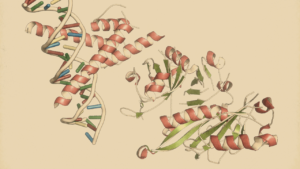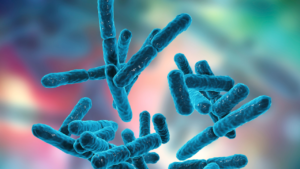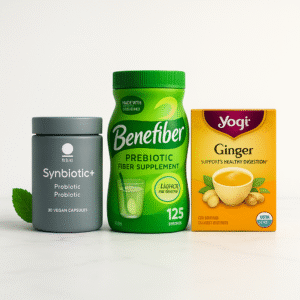Exploring the Placental Microbiome: Impact on Pregnancy and Neonatal Health
Explore the groundbreaking research on the placental microbiome and its profound impact on pregnancy outcomes, maternal microbiota, and neonatal health.

In the intricate journey of pregnancy, the placental microbiome emerges as a pivotal player, orchestrating a complex array of biological processes that influence both maternal and neonatal health.
Long perceived as a sterile sanctuary, the placenta is now recognized as a dynamic ecosystem, rich with microbial life that sets the stage for the infant's developing microbiome.
This groundbreaking exploration into the placental microbiota unveils its profound impact on pregnancy outcomes, highlighting the subtle yet significant role of prenatal microbial exposure.
From the nuances of maternal diet to the implications of oral microbiota on pregnancy, the intricate web of life that commences within the womb is a marvel of nature that continues to captivate scientists and healthcare professionals alike.
As we delve deeper into the hidden world of maternal microbiota, the revelations extend far beyond the bounds of traditional perspectives, offering new insights into the lifelong journey of health that begins even before birth.

In This Article:
Key Points
- Placental Microbiome Discovery: Once thought to be sterile, the placenta is now known to harbor its own unique microbiota, which may play a vital role in the health of the fetus and influence pregnancy outcomes.
- Link to Oral Health: Studies suggest a connection between the composition of the placental microbiome and maternal oral microbiota, indicating that maternal oral health could have direct implications for pregnancy.
- Microbial Role in Pregnancy Complications: Emerging research points to specific microbial patterns in the placenta as potential markers for pregnancy complications such as preterm birth, with changes in microbiota possibly triggering adverse outcomes.
- Neonatal Microbiome Development: The infant's microbiome begins to develop before birth, with bacteria present in the meconium indicating a prenatal microbial connection that can influence the baby's health from the earliest stages.
- Influence of Delivery Method: The mode of delivery affects the initial composition of an infant’s microbiome, with vaginally delivered infants inheriting different microbial profiles compared to those delivered by C-section, which can have long-term health implications.
- Dietary Influence on Microbiome: An infant's gut microbiome, influenced by maternal diet and breastfeeding, begins its development at birth. Breast milk is particularly instrumental in shaping a beneficial microbiome.
- Breastmilk Microbiota: Breastmilk contains a diverse microbiome that evolves over time. It plays a crucial role in developing the infant's gut bacteria and immune system.
- Early-Life Nutrition and Microbiome Maturation: The transition from breast milk to solid foods is a significant stage in the maturation of the gut microbiome, with potential long-term effects on a child's health, emphasizing the importance of early nutrition.
The Placental Microbiome: A Crucial Ecosystem for Pregnancy and Neonatal Well-being
For years, medical dogma cast the placenta as a sterile environment, but recent scientific discoveries have unveiled the placental microbiome, a diverse pregnancy microbiota that may play an essential role in safeguarding the fetus and influencing pregnancy outcomes.
As early as 1982, researchers like Kovalovszki began to uncover the diverse pregnancy microbiota within the placental microbiome, sparking a revolution in our understanding of prenatal microbial exposure A Trusted Source Kovalovszki, L., Villanyi, Z., Pataki, I., Veszelowvsky, I., and Nagy, Z. B. (1982). Isolation of aerobic bacteria from the placenta. Acta Paediatr. Acad. Sci. Hung. 23, 357–360. PubMed Abstract Google Scholar.
More recent studies, such as those by Aagaard et al. (2014) A Trusted Source Aagaard, K., Ma, J., Antony, K. M., Ganu, R., Petrosino, J., and Versalovic, J. (2014). The placenta harbors a unique microbiome. Sci. Transl. Med. 6:237ra65. doi: 10.1126/scitranslmed.3008599 PubMed AbstractCrossRef Full Text and Hyman et al. (2014) A Trusted Source Hyman, R. W., Fukushima, M., Jiang, H., Fung, E., Rand, L., Johnson, B., et al. (2014). Diversity of the vaginal microbiome correlates with preterm birth. Reprod. Sci. 21, 32–40. doi: 10.1177/1933719113488838 PubMed AbstractCrossRef Full TextGoogle Scholar, have employed advanced genomic sequencing to show that the placenta harbors its own unique microbiota,
with a composition strikingly similar to the oral microbiome, including species like Prevotella and Neisseria.
This emerging understanding of the placental microbiome, or 'pregnancy microbiota', and its 'microbiome dynamics' may explain the link between maternal oral health and pregnancy outcomes.
The presence of microbes in the placenta, amniotic fluid, and umbilical cord blood even in healthy pregnancies,
as shown by studies like DiGiulio et al. (2010a, b) A Trusted Source DiGiulio, D. B., Gervasi, M., Romero, R., Mazaki-Tovi, S., Vaisbuch, E., Kusanovic, J. P., et al. (2010a). Microbial invasion of the amniotic cavity in preeclampsia as assessed by cultivation and sequence-based methods. J. Perinat. Med. 38, 503–513. doi: 10.1515/jpm.2010.078 PubMed AbstractCrossRef Full TextGoogle Scholar A Trusted Source DiGiulio, D. B., Romero, R., Kusanovic, J. P., Gomez, R., Kim, C. J., Seok, K. S., et al. (2010b). Prevalence and diversity of microbes in the amniotic fluid, the fetal inflammatory response, and pregnancy outcome in women with preterm pre-labor rupture of membranes. Am. J. Reprod. Immunol. 64, 38–57. doi: 10.1111/j.1600-0897.2010.00830.x PubMed AbstractCrossRef Full TextGoogle Scholar
and Romero et al. (2014b) A Trusted Source Romero, R., Miranda, J., Chaiworapongsa, T., Chaemsaithong, P., Gotsch, F., Dong, Z., et al. (2014b). Sterile intra-amniotic inflammation in asymptomatic patients with a sonographic short cervix: prevalence and clinical significance. J. Matern. Fetal Neonatal Med. 28, 1–17. doi: 10.3109/14767058.2014.954243 PubMed AbstractCrossRef Full TextGoogle Scholar, suggests that these bacteria may play a crucial role in placental development and function.
The intricate balance of the microbial ecosystem in pregnancy, evident in the low microbial density of the placenta, necessitates advanced scientific techniques to explore these communities' functions.
Research continues to delve into the potential necessity of these microbial populations for healthy pregnancy, their specific localization within the placenta, and the possible mechanisms by which they might influence placental health.
This exploration into the diet and the placental microbiome, alongside the intricate balance of the microbial ecosystem in pregnancy, not only reshapes our understanding of maternal and infant health but also highlights the profound potential of prenatal microbial exposure.
The Placental Microbiome's Influence on Pregnancy Outcomes and Maternal Health
Pregnancy is a complex dance of development and adaptation, where not just the mother but also an entire world of microbes—the pregnancy microbiota—play a crucial role.

Researchers like Kujovich (2004) A Trusted Source Kujovich, J. L. (2004). Thrombophilia and pregnancy complications. Am. J. Obstet. Gynecol. 191, 412–424. doi: 10.1016/j.ajog.2004.03.001PubMed AbstractCrossRef Full TextGoogle Scholar and Rizzo and Arduini (2009) A Trusted Source Rizzo, G., and Arduini, D. (2009). Intrauterine growth restriction: diagnosis and management. a review. Minerva Ginecol. 61, 411–420.PubMed AbstractGoogle Scholar acknowledge that despite medical advances, many pregnancy complications remain a mystery.
Emerging research in microbiome dynamics suggests these tiny organisms could be key players in pregnancy health, as Mysorekar and Cao (2014) propose A Trusted Source Mysorekar, I. U., and Cao, B. (2014). Microbiome in parturition and preterm birth. Semin. Reprod. Med. 32, 50–55. doi: 10.1055/s-0033-1361830 PubMed AbstractCrossRef Full TextGoogle Scholar.
Romero et al. (2014a) investigated the vaginal microbiome, discovering no direct link between microbial diversity and pregnancy outcomes A Trusted Source Romero, R., Hassan, S. S., Gajer, P., Tarca, A. L., Fadrosh, D. W., Nikita, L., et al. (2014a). The composition and stability of the vaginal microbiota of normal pregnant women is different from that of non-pregnant women. Microbiome 2:4. doi: 10.1186/2049-2618-2-4 PubMed AbstractCrossRef Full Text .
However, Hyman et al. (2014), and DiGiulio et al. (2015) A Trusted Source DiGiulio, D. B., Callahan, B. J., McMurdie, P. J., Costello, E. K., Lyell, D. J., Robaczewska, A., et al. (2015). Temporal and spatial variation of the human microbiota during pregnancy. Proc. Natl. Acad. Sci. U.S.A. 112, 11060–11065. doi: 10.1073/pnas.1502875112 PubMed AbstractCrossRef Full TextGoogle Scholar identified certain microbial patterns—like increased Gardnerella and Ureaplasma, decreased Lactobacillus, and higher diversity—as potential markers for preterm birth.
Probiotic Supplements: Boost your and your baby’s microbiota health with our tailored probiotic supplements, ideal for pregnant women and infants.
The mechanism? Changes in the microbiota might trigger inflammation, contractions, and membrane weakening, culminating in early delivery, as suggested by researchers Park et al. (2005) A Trusted Source Park, J. S., Park, C. W., Lockwood, C. J., and Norwitz, E. R. (2005). Role of cytokines in preterm labor and birth. Minerva Ginecol. 57, 349–366. PubMed AbstractGoogle Scholar and Lajos et al. (2008) A Trusted Source Lajos, G. J., Passini Junior, R., Nomura, M. L., Amaral, E., Pereira, B. G., Milanez, H., et al. (2008). [Cervical bacterial colonization in women with preterm labor or premature rupture of membranes]. Rev. Bras. Ginecol. Obstet. 30, 393–399. doi: 10.1590/S0100-72032008000800004 PubMed AbstractCrossRef Full TextGoogle Scholar .
Even asymptomatic fungal colonization, like Candida, as Farr et al. (2015) A Trusted Source Farr, A., Kiss, H., Holzer, I., Husslein, P., Hagmann, M., and Petricevic, L. (2015). Effect of asymptomatic vaginal colonization with Candida albicans on pregnancy outcome. Acta Obstet. Gynecol. Scand. 94, 989–996. doi: 10.1111/aogs.12697 PubMed AbstractCrossRef Full TextGoogle Scholar noted, may elevate preterm birth risks.
In examining the connections between maternal oral health and pregnancy, emerging research links periodontal disease to complications like preterm birth,
further highlighting the significance of the oral microbiota and pregnancy A Trusted Source Offenbacher, S., Boggess, K. A., Murtha, A. P., Jared, H. L., Lieff, S., McKaig, R. G., et al. (2006). Progressive periodontal disease and risk of very preterm delivery. Obstet. Gynecol. 107, 29–36. doi: 10.1097/01.AOG.0000190212.87012.96 PubMed AbstractCrossRef Full TextGoogle Scholar.
Intriguingly, oral bacteria may incite inflammation or even reach the placenta, potentially triggering early labor, as elucidated by ElAttar (1976) A Trusted Source ElAttar, T. M. (1976). Prostaglandin E2 in human gingiva in health and disease and its stimulation by female sex steroids. Prostaglandins 11, 331–341. doi: 10.1016/0090-6980(76)90155-6 PubMed AbstractCrossRef Full TextGoogle Scholar and Kim and Amar (2006) A Trusted Source Kim, J., and Amar, S. (2006). Periodontal disease and systemic conditions: a bidirectional relationship. Odontology 94, 10–21. doi: 10.1007/s10266-006-0060-6 PubMed AbstractCrossRef Full TextGoogle Scholar .
Oral Hygiene Products: Ensure optimal oral health during pregnancy with our specially designed oral hygiene products, supporting a healthy placental microbiome.
Amidst this, the placental microbiome itself is under the microscope.
Could the bacterial residents differ in troubled pregnancies? Romero et al. (2014a) observed distinct bacterial populations in preterm deliveries.
Yet, the evidence, as Stout et al. (2013) points out, is still not definitive, inviting further research to unravel these microbial mysteries A Trusted Source Stout, M. J., Conlon, B., Landeau, M., Lee, I., Bower, C., Zhao, Q., et al. (2013). Identification of intracellular bacteria in the basal plate of the human placenta in term and preterm gestations. Am. J. Obstet. Gynecol. 208, 226.e1–226.e7. doi: 10.1016/j.ajog.2013.01.018PubMed AbstractCrossRef Full TextGoogle Scholar .
Understanding these microbiome dynamics is not just academic; it's a crucial piece of the puzzle in safeguarding pregnancies.
It's a realm where tiny bacteria hold the profound potential to sway the health outcomes of both mother and child.
Neonatal Microbiome Development: The Journey from Womb to World
Gone is the belief that babies are born germ-free; the neonatal microbiota begins its journey before birth.
Research by Jimenez et al. (2008) A Trusted Source Jimenez, E., Marin, M. L., Martin, R., Odriozola, J. M., Olivares, M., Xaus, J., et al. (2008). Is meconium from healthy newborns actually sterile? Res. Microbiol. 159, 187–193. doi: 10.1016/j.resmic.2007.12.007 PubMed AbstractCrossRef Full TextGoogle Scholar revealed that bacteria from a mother can reach the fetus's gastrointestinal tract, as evidenced by the presence of specific bacteria in the meconium of C-section delivered mice pups.

Human studies, like those by Rautava et al. (2012b) A Trusted Source Rautava, S., Kainonen, E., Salminen, S., and Isolauri, E. (2012b). Maternal probiotic supplementation during pregnancy and breast-feeding reduces the risk of eczema in the infant. J. Allergy Clin. Immunol. 130, 1355–1360. doi: 10.1016/j.jaci.2012.09.003PubMed AbstractCrossRef Full TextGoogle Scholar, support this, showing that probiotics ingested by mothers can alter the bacteria in both the placenta and the newborn's first stool.
These findings underscore a prenatal microbial connection, hinting at an intricate interaction between the pregnancy microbiota and the developing baby, shaping health from the earliest stages of life.
First Encounters: The Diversity and Impact of the Infant's Initial Microbiota
Dispelling the myth of sterile beginnings, recent research reveals that meconium—the newborn's first stool—is a rich tapestry of bacterial populations.
Studies, including those by Koleva et al. (2015) A Trusted Source Koleva, P. T., Kim, J. S., Scott, J. A., and Kozyrskyj, A. L. (2015). Microbial programming of health and disease starts during fetal life. Birth Defects Res. C Embryo Today 105, 265–277. doi: 10.1002/bdrc.21117 PubMed AbstractCrossRef Full TextGoogle Scholar, and Ardissone et al. (2014) A Trusted Source Ardissone, A. N., de la Cruz, D. M., Davis-Richardson, A. G., Rechcigl, K. T., Li, N., Drew, J. C., et al. (2014). Meconium microbiome analysis identifies bacteria correlated with premature birth. PLoS ONE 9:e90784. doi: 10.1371/journal.pone.0090784 PubMed AbstractCrossRef Full TextGoogle Scholar, have identified various bacteria such as Enterococcus and Escherichia present from the start.
Unlike adults, newborns have a distinct microbiome profile with less diversity and more variability, hinting at the complex microbiome dynamics initiated even before birth.
Preterm infants show even more unique microbial patterns, suggesting a critical link between the pregnancy microbiota and the baby's early development.
Delivery Methods and Their Mark: Shaping the Infant's Microbiome from Day One
The longstanding debate over the impact of delivery mode on an infant's microbiome is evolving.
Gosalbes et al. (2013) found no initial difference between C-section and vaginally delivered infants' meconium microbiota A Trusted Source Gosalbes, M. J., Llop, S., Valles, Y., Moya, A., Ballester, F., and Francino, M. P. (2013). Meconium microbiota types dominated by lactic acid or enteric bacteria are differentially associated with maternal eczema and respiratory problems in infants. Clin. Exp. Allergy 43, 198–211. doi: 10.1111/cea.12063 PubMed AbstractCrossRef Full TextGoogle Scholar .
Yet, the story unfolds as newborns grow, revealing that vaginal births imbue infants with their mother's vaginal and gut bacteria, rich in Prevotella and Lactobacillus A Trusted Source Dominguez-Bello, M. G., Costello, E. K., Contreras, M., Magris, M., Hidalgo, G., Fierer, N., et al. (2010). Delivery mode shapes the acquisition and structure of the initial microbiota across multiple body habitats in newborns. Proc. Natl. Acad. Sci. U.S.A. 107, 11971–11975. doi: 10.1073/pnas.1002601107 PubMed AbstractCrossRef Full TextGoogle Scholar .
C-section infants, however, start life with a microbiome resembling skin flora, such as Streptococcus,
and show altered microbial diversity and development over the first two years A Trusted Source Backhed, F., Roswall, J., Peng, Y., Feng, Q., Jia, H., Kovatcheva-Datchary, P., et al. (2015). Dynamics and stabilization of the human gut microbiome during the first year of life. Cell Host Microbe 17, 690–703. doi: 10.1016/j.chom.2015.05.012 PubMed AbstractCrossRef Full TextGoogle Scholar A Trusted Source Jakobsson, H. E., Abrahamsson, T. R., Jenmalm, M. C., Harris, K., Quince, C., Jernberg, C., et al. (2014). Decreased gut microbiota diversity, delayed Bacteroidetes colonisation and reduced Th1 responses in infants delivered by caesarean section. Gut 63, 559–566. doi: 10.1136/gutjnl-2012-303249 PubMed AbstractCrossRef Full TextGoogle Scholar.
This divergence carries potential health implications.
C-section infants have a higher prevalence of antibiotic-resistant genes and may be more susceptible to MRSA infections A Trusted Source Centers for Disease Prevention (2006). Community-associated methicillin-resistant Staphylococcus aureus infection among healthy newborns–Chicago and Los Angeles County, 2004. MMWR Morb. Mortal Wkly. Rep. 55, 329–332. doi: 10.1097/01.inf.0000226977.41367.58 PubMed AbstractCrossRef Full Text.
Even the oral microbiome in infancy feels the ripple effects of birth methods, with C-section babies showing distinct bacterial populations and an earlier acquisition of S. mutans, a bacterium linked to dental caries A Trusted Source Li, Y., Caufield, P. W., Dasanayake, A. P., Wiener, H. W., and Vermund, S. H. (2005). Mode of delivery and other maternal factors influence the acquisition of Streptococcus mutans in infants. J. Dent. Res. 84, 806–811. doi: 10.1177/154405910508400905 PubMed AbstractCrossRef Full TextGoogle Scholar.
The concerns extend beyond infections.
Some research links C-sections to a higher risk of celiac disease, obesity, and asthma A Trusted Source Decker, E., Engelmann, G., Findeisen, A., Gerner, P., Laass, M., Ney, D., et al. (2010). Cesarean delivery is associated with celiac disease but not inflammatory bowel disease in children. Pediatrics 125, e1433–e1440. doi: 10.1542/peds.2009-2260 PubMed AbstractCrossRef Full TextGoogle Scholar,
and suggests that early probiotic administration might mitigate allergy risks in C-section infants A Trusted Source Kuitunen, M., Kukkonen, K., Juntunen-Backman, K., Korpela, R., Poussa, T., Tuure, T., et al. (2009). Probiotics prevent IgE-associated allergy until age 5 years in cesarean-delivered children but not in the total cohort. J. Allergy Clin. Immunol. 123, 335–341. doi: 10.1016/j.jaci.2008.11.019 PubMed AbstractCrossRef Full TextGoogle Scholar.
These findings point to a crucial interplay between pregnancy microbiota, microbiome dynamics, and the developing immune system, with vaginal births potentially fostering more robust immune maturation.
In response, innovative approaches like microbiota transfer for C-section babies are being explored to recreate the microbial exposure of vaginal delivery, with promising early results A Trusted Source Dominguez-Bello, M. G., De Jesus-Laboy, K. M., Shen, N., Cox, L. M., Amir, A., Gonzalez, A., et al. (2016). Partial restoration of the microbiota of cesarean-born infants via vaginal microbial transfer. Nat. Med. 22, 250–253. doi: 10.1038/nm.4039 PubMed AbstractCrossRef Full TextGoogle Scholar.
As research continues, it becomes increasingly clear that the delivery method leaves a microbial imprint on infants, possibly with lasting effects on their health and development.

Feeding the Future: Diet's Impact on the Developing Infant Microbiome
An infant's gut microbiome, a part of the broader pregnancy microbiota, begins its development at birth, influenced by environmental factors, maternal diet, and the delicate interplay of prenatal microbial exposure.
Early life is a critical window where dietary shifts and immune maturation significantly shape the infant's gut bacteria.
Koenig et al. (2011) A Trusted Source Koenig, J. E., Spor, A., Scalfone, N., Fricker, A. D., Stombaugh, J., Knight, R., et al. (2011). Succession of microbial consortia in the developing infant gut microbiome. Proc. Natl. Acad. Sci. U.S.A. 108(Suppl. 1), 4578–4585. doi: 10.1073/pnas.1000081107 PubMed AbstractCrossRef Full TextGoogle Scholar and Backhed et al. (2015) A Trusted Source Backhed, F., Roswall, J., Peng, Y., Feng, Q., Jia, H., Kovatcheva-Datchary, P., et al. (2015). Dynamics and stabilization of the human gut microbiome during the first year of life. Cell Host Microbe 17, 690–703. doi: 10.1016/j.chom.2015.05.012 PubMed AbstractCrossRef Full TextGoogle Scholar found that the mode of delivery and breastmilk versus formula feeding are pivotal in establishing gut flora.
Nutritional Guides: Navigate your pregnancy and breastfeeding journey with our comprehensive nutritional guides, tailored to support a healthy microbiome.
Initially unstable, the infant's microbiota diversity increases in the first months, paralleling dietary changes from milk to more complex foods.
By the first birthday, the infant's microbiome begins to resemble the mother's more closely, reflecting a maturation process that aligns with the child's changing nutritional needs.
Yet, this development is sensitive; factors like illness, antibiotics, or dietary changes can disrupt the microbial balance.
Such shifts are not just transient; prolonged malnutrition can cause a child's microbiome to revert to an earlier stage of development A Trusted Source Smith, M. I., Yatsunenko, T., Manary, M. J., Trehan, I., Mkakosya, R., Cheng, J., et al. (2013). Gut microbiomes of Malawian twin pairs discordant for kwashiorkor. Science 339, 548–554. doi: 10.1126/science.1229000 PubMed AbstractCrossRef Full TextGoogle Scholar.
This microbial evolution underscores the importance of nutrition and environmental factors in the early formation of the gut microbiome, with potential long-term implications for a child's health.
Breastmilk: A Source of Microbial Richness for Infant Health
Long thought to be a sterile nutrition source, human milk is now celebrated for its role in shaping the infant's microbiome.
This complex fluid, rich in proteins, fats, and unique carbohydrates, is a key player in the dynamics of pregnancy microbiota.
Hunt et al. (2011) A Trusted Source Hunt, K. M., Foster, J. A., Forney, L. J., Schutte, U. M., Beck, D. L., Abdo, Z., et al. (2011). Characterization of the diversity and temporal stability of bacterial communities in human milk. PLoS ONE 6:e21313. doi: 10.1371/journal.pone.0021313 PubMed AbstractCrossRef Full TextGoogle Scholar discovered a diverse milk microbiome, identifying a "core" group of bacteria present across different mothers.
The microbiota of milk evolves, with early colostrum containing immune-boosting bacteria like Staphylococcus and Lactococcus, and later milk reflecting the infant's oral bacteria, such as Prevotella, due to the close contact during breastfeeding A Trusted Source Cabrera-Rubio, R., Collado, M. C., Laitinen, K., Salminen, S., Isolauri, E., and Mira, A. (2012). The human milk microbiome changes over lactation and is shaped by maternal weight and mode of delivery. Am. J. Clin. Nutr. 96, 544–551. doi: 10.3945/ajcn.112.037382 PubMed AbstractCrossRef Full TextGoogle Scholar .
Maternal factors, notably weight, influence this microbial composition.
In obese women, an increased presence of Staphylococcus, including strains like S.aureus, has been observed, which intriguingly correlates with the gut microbiota of overweight children A Trusted Source Kalliomaki, M., Collado, M. C., Salminen, S., and Isolauri, E. (2008). Early differences in fecal microbiota composition in children may predict overweight. Am. J. Clin. Nutr. 87, 534–538.PubMed AbstractGoogle Scholar.
This poses questions about the long-term impact on a child's health and development.
The journey of these microbes from a mother's gut to her milk is hypothesized to be mediated by hormonal changes that increase gut permeability during pregnancy, allowing bacteria to enter the bloodstream and mammary glands A Trusted Source Jeurink, P. V., van Bergenhenegouwen, J., Jimenez, E., Knippels, L. M., Fernandez, L., Garssen, J., et al. (2013). Human milk: a source of more life than we imagine. Benef. Microbes 4, 17–30. doi: 10.3920/BM2012.0040 PubMed AbstractCrossRef Full TextGoogle Scholar.
The potential functions of these milk-dwelling microbes—whether they contribute to milk digestion, bolster immunity, or influence the infant's own microbiota—are rich areas for future research, promising insights into the profound benefits of breastfeeding.
Maternal Diet and Its Influence on Infant Microbiome Maturation
The diet during infancy—breast milk versus formula—carves distinct paths in developing a child's gut microbiome.
Breast milk, rich in complex carbohydrates known as oligosaccharides, provides a unique advantage to bacteria like Bifidobacterium, Lactobacillus, and Bacteroides, which thrive by breaking down these substances into usable sugars A Trusted Source Sela, D. A., Li, Y., Lerno, L., Wu, S., Marcobal, A. M., German, J. B., et al. (2011). An infant-associated bacterial commensal utilizes breast milk sialyloligosaccharides. J. Biol. Chem. 286, 11909–11918. doi: 10.1074/jbc.M110.193359 PubMed AbstractCrossRef Full TextGoogle Scholar A Trusted Source Manthey, C. F., Autran, C. A., Eckmann, L., and Bode, L. (2014). Human milk oligosaccharides protect against enteropathogenic Escherichia coli attachment in vitro and EPEC colonization in suckling mice. J. Pediatr. Gastroenterol. Nutr. 58, 165–168. doi: 10.1097/MPG.0000000000000172 PubMed AbstractCrossRef Full TextGoogle Scholar.
This synergy between the mother's milk and the infant's gut bacteria aids the baby's nutrition and growth, a process Bode (2012) A Trusted Source Bode, L. (2012). Human milk oligosaccharides: every baby needs a sugar mama. Glycobiology 22, 1147–1162. doi: 10.1093/glycob/cws074 PubMed AbstractCrossRef Full TextGoogle Scholar refers to as co-evolution.
Studies show Bifidobacteria dominate the gut flora in breast-fed infants, while formula-fed infants have a more varied microbiota, with a higher presence of Enterococci and Clostridia A Trusted Source Bezirtzoglou, E., Tsiotsias, A., and Welling, G. W. (2011). Microbiota profile in feces of breast- and formula-fed newborns by using fluorescence in situ hybridization (FISH). Anaerobe 17, 478–482. doi: 10.1016/j.anaerobe.2011.03.009 PubMed AbstractCrossRef Full TextGoogle Scholar.
This difference extends to the oral microbiome, where breast-fed infants boast beneficial lactobacilli absent in formula-fed peers A Trusted Source Holgerson, P. L., Vestman, N. R., Claesson, R., Ohman, C., Domellof, M., Tanner, A. C., et al. (2013). Oral microbial profile discriminates breast-fed from formula-fed infants. J. Pediatr. Gastroenterol. Nutr. 56, 127–136. doi: 10.1097/MPG.0b013e31826f2bc6 PubMed AbstractCrossRef Full TextGoogle Scholar A Trusted Source Vestman, N. R., Timby, N., Holgerson, P. L., Kressirer, C. A., Claesson, R., Domellof, M., et al. (2013). Characterization and in vitro properties of oral lactobacilli in breastfed infants. BMC Microbiol. 13:193. doi: 10.1186/1471-2180-13-193 PubMed AbstractCrossRef Full TextGoogle Scholar.
The transition to solid foods is another transformative stage, marking the gut microbiome's progression towards a more adult-like composition rich in Bacteroidetes and Firmicutes,
and an increase in fecal short-chain fatty acids, indicative of microbial maturity A Trusted Source Valles, Y., Artacho, A., Pascual-Garcia, A., Ferrus, M. L., Gosalbes, M. J., Abellan, J. J., et al. (2014). Microbial succession in the gut: directional trends of taxonomic and functional change in a birth cohort of Spanish infants. PLoS Genet. 10:e1004406. doi: 10.1371/journal.pgen.1004406 PubMed AbstractCrossRef Full TextGoogle Scholar A Trusted Source Backhed, F., Roswall, J., Peng, Y., Feng, Q., Jia, H., Kovatcheva-Datchary, P., et al. (2015). Dynamics and stabilization of the human gut microbiome during the first year of life. Cell Host Microbe 17, 690–703. doi: 10.1016/j.chom.2015.05.012 PubMed AbstractCrossRef Full TextGoogle Scholar.
These dietary milestones shape the infant’s gut flora, equipping it with the means to process a wider array of nutrients and handle environmental exposures.
Understanding these microbiome dynamics is key to appreciating how early nutrition can influence long-term health.
Current research continues to unravel the intricate relationships between feeding methods and microbial colonization, with the ultimate goal of optimizing the early-life diet for the best health outcomes.
Conclusion
The article underscores the vital role of early-life nutrition and its long-term impact on health, emphasizing the importance of understanding microbiome dynamics.
Ongoing research is progressively revealing the complex interplay between different feeding methods and microbial colonization.
The overarching objective of this research is to enhance early-life dietary strategies to foster the best health outcomes.
Educational Books: Deepen your understanding of the placental microbiome and its impact on pregnancy and neonatal health with our selection of informative books.
Discussion
The discussion in the article highlights the critical influence of early nutrition on the infant's gut microbiome development.
Breast milk, particularly rich in oligosaccharides, favors the growth of beneficial bacteria essential for infant nutrition and growth, while formula-fed infants develop a more diverse microbiome.
The shift to solid foods marks a significant transition, further maturing the microbiome towards an adult-like state.
Understanding these dynamics is crucial for optimizing early dietary practices to support long-term health.
Review date not set.
How we reviewed this article:
Latest on:





